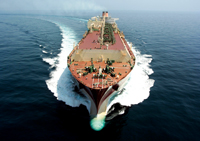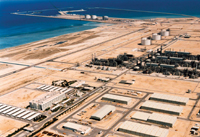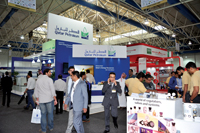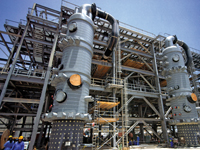
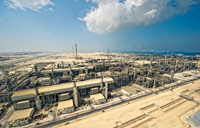 Qatargas ... cutting prices to stay in the competition
Qatargas ... cutting prices to stay in the competition
QATAR is sweetening its gas sales pitch to lock-in long-term Asian buyers before a wave of new suppliers from the US, Australia, and east Africa snatch market share and deflate prices.
Up to now, importers like Japan and South Korea have had few major supply alternatives to the tiny Gulf state, whose liquefied natural gas exports represent about a third of global supply.
But in a growing market for LNG, gas condensed for shipment to markets pipeline supplies do not reach, nearly 30 million tonnes a year (mtpy) of US gas is already sold to Asia.
Some 350 mtpy more will come on stream from the US, Canada, east Africa, Russia and Australia in the years ahead – more than doubling worldwide output.
Buyers in the Pacific have shunned Qatar’s high asking prices, and China and India are also hesitating over plans to sign new long-term deals.
Qatar now hopes to lure leading buyers back by offering cheap teaser deals lasting a few years, backed up by more strategic 20-year sales, sources familiar with the negotiations say.
“The Qataris have made good money over the years, but the joy ride is over,” says one source of the world’s lowest cost LNG producer.
LNG pricing is still closely tied to oil. It is expressed as a “slope” based around a $100 per barrel oil price, where a million British thermal unit (mmBtu) of LNG costs a percentage of that per-barrel price, plus a small fixed dollar amount.
“They are now offering three-year deals priced at 13.5 per cent slope, while their long-term price is more around the 14.6-14.7 range,” an industry source with knowledge of the matter says.
Long-term LNG deals have been priced at a slope of 14.85 per cent in recent sales from Australia and Papua New Guinea – more evidence Qatar is looking to undercut rivals.
Poor demand and oversupply has driven gas prices down in Europe while in South America’s subsidised energy markets, a lack of creditworthy buyers makes direct 20-year deals risky.
The US, a market which much of Qatar’s LNG production capacity was built to supply, has already become virtually self-sufficient thanks to a glut of shale gas, and will soon be competing with Qatar in the Asian market.
Beijing’s desire to improve air quality and a disaffection with atomic power in the region since Japan’s Fukushima nuclear plant disaster in Japan in 2011 are helping to drive demand.
Asian demand is the prize for LNG producers – Qatar has even agreed to supply additional LNG to Chinese and South Korean buyers this winter.
Despite the US competition, Doha remains set on oil-linked pricing and resists contractual devices used by Australian suppliers that protect buyers from oil price spikes.
In 2009, Qatar sold China 5 million tonnes per annum (mtpy) of LNG at a 16.2 per cent slope to the Japanese Crude Cocktail (JCC) – one of the highest priced long term deals ever struck. But sources say China has since put off taking up an option to buy a similar further amount, prompting Qatar to drop prices.
“The Chinese signed up to a very expensive deal, Qatar may be offering cheaper prices to prevent Beijing from trying to renegotiate that first deal,” a trade source says.




















































































